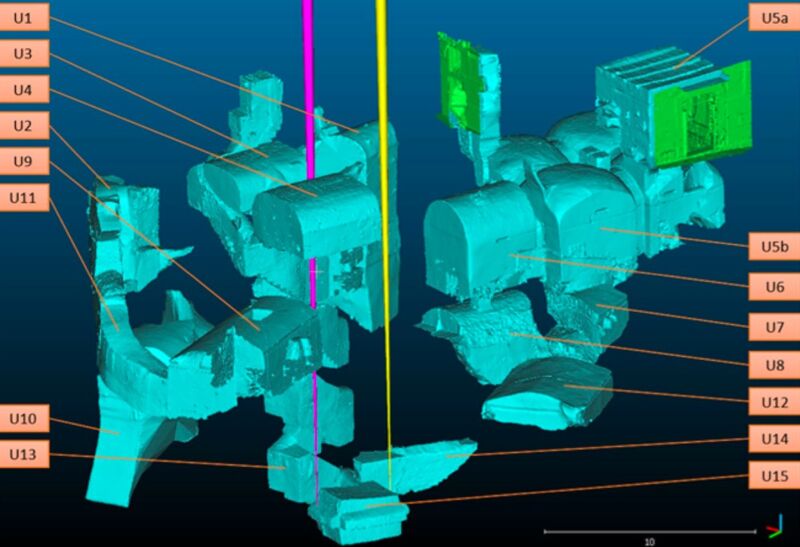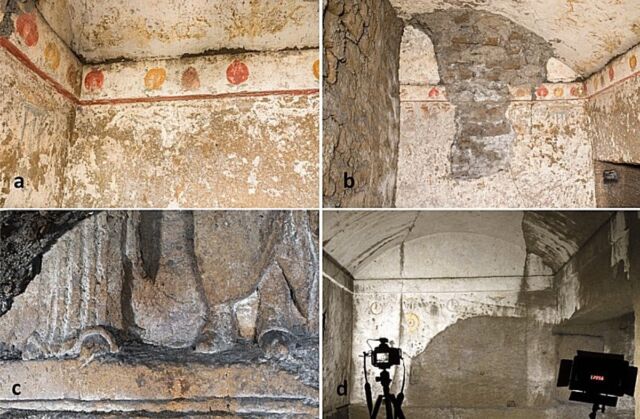
The ruins of the ancient necropolis of Neapolis lie some 10 meters (about 33 feet) below modern-day Naples, Italy. But the site is in a densely populated urban district, making it challenging to undertake careful archaeological excavations of those ruins. So a team of scientists turned to cosmic rays for help—specifically an imaging technique called muography, or muon tomography—and discovered a previously hidden underground burial chamber, according to a recent paper published in the Scientific Reports journal.
As we’ve reported, there is a long history of using muons to image archaeological structures, a process made easier because cosmic rays provide a steady supply of these particles. An engineer named E.P. George used them to make measurements of an Australian tunnel in the 1950s. But Nobel-prize-winning physicist Luis Alvarez put muon imaging on the map when he teamed up with Egyptian archaeologists to use the technique to search for hidden chambers in the Pyramid of Khafre at Giza. Although it worked in principle, they didn’t find any hidden chambers.
Muons are also used to hunt for illegally transported nuclear materials at border crossings and to monitor active volcanoes in hopes of detecting when they might erupt. In 2008, scientists at the University of Texas, Austin, tried to follow in Alvarez’s footsteps, repurposing old muon detectors to search for possible hidden Mayan ruins in Belize. And physicists at Los Alamos National Laboratory have been developing portable versions of muon imaging systems to unlock the construction secrets of the soaring dome (Il Duomo) atop the Cathedral of St. Mary of the Flower in Florence, Italy, designed by Filippo Brunelleschi in the early 15th century. The dome has been plagued by cracks for centuries, and muon imaging could help preservationists figure out how to fix it.
In 2016, scientists using muon imaging picked up signals indicating a hidden corridor behind the famous chevron blocks on the north face of the Great Pyramid of Giza in Egypt. The following year, the same team detected a mysterious void in another area of the pyramid, believing it could be a hidden chamber, which was subsequently mapped out using two different muon imaging methods.
There are many variations of muon imaging, but they all typically involve gas-filled chambers. As muons zip through the gas, they collide with the gas particles and emit a telltale flash of light, which is recorded by the detector, allowing scientists to calculate the particle’s energy and trajectory. It’s similar to X-ray imaging or ground-penetrating radar, except with naturally occurring high-energy muons rather than X-rays or radio waves. That higher energy makes it possible to image thick, dense substances like the stones used to build pyramids. The denser the imaged object, the more muons are blocked, casting a telltale shadow. Hidden chambers would appear in the final image because they blocked fewer particles.

Neapolis was a Hellenistic city in a hilly area rich in volcanic tuff rock. That made it soft enough to sculpt out tombs, worship spaces, or caves for housing. The necropolis in what is now the Sanita district of Naples was one such creation, used for burials from the late fourth century BCE to early first century CE. The site was buried in sediment over time by a series of natural disasters, most notably flooding by the lava dei vergini (“lava of the virgins”). Unlike the volcanic lava that famously engulfed Pompeii, this “lava” was made up of mud and rocks that came loose from the hills during heavy rains.
https://arstechnica.com/?p=1939194

